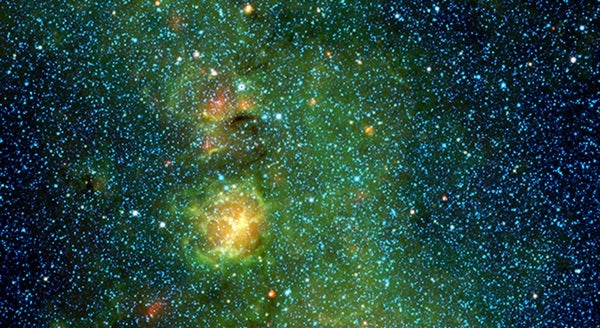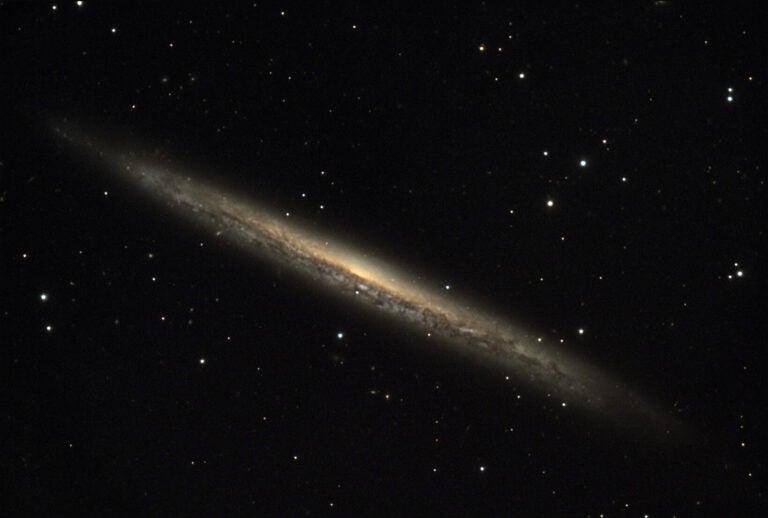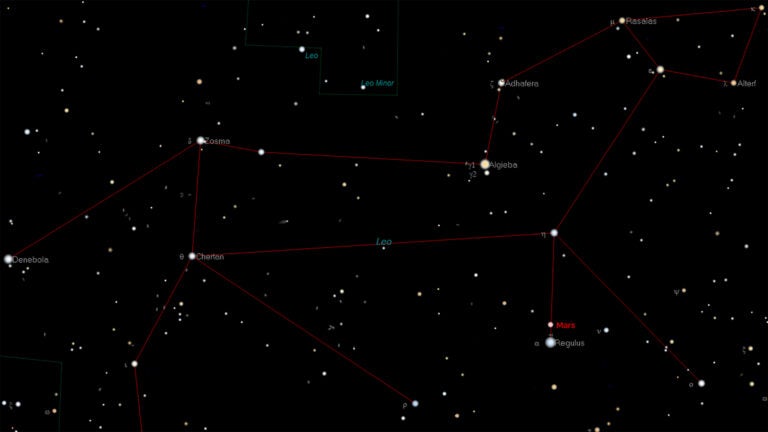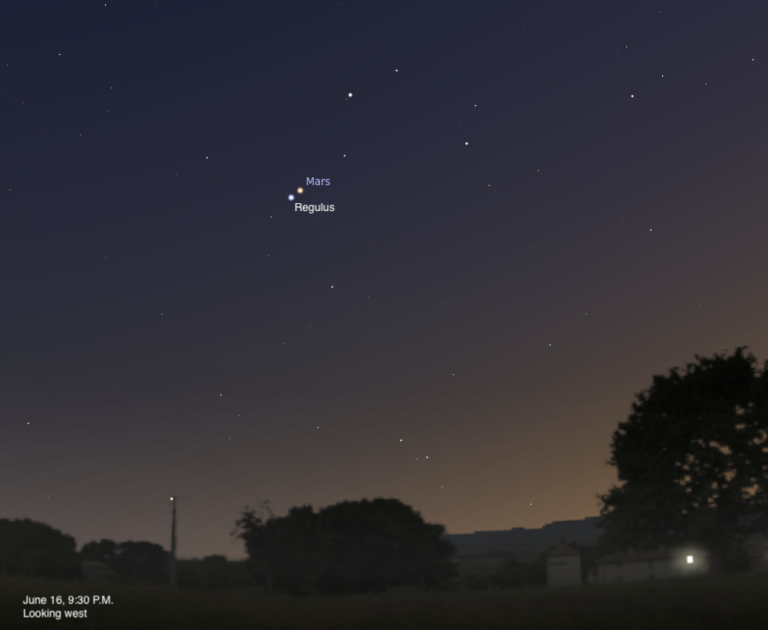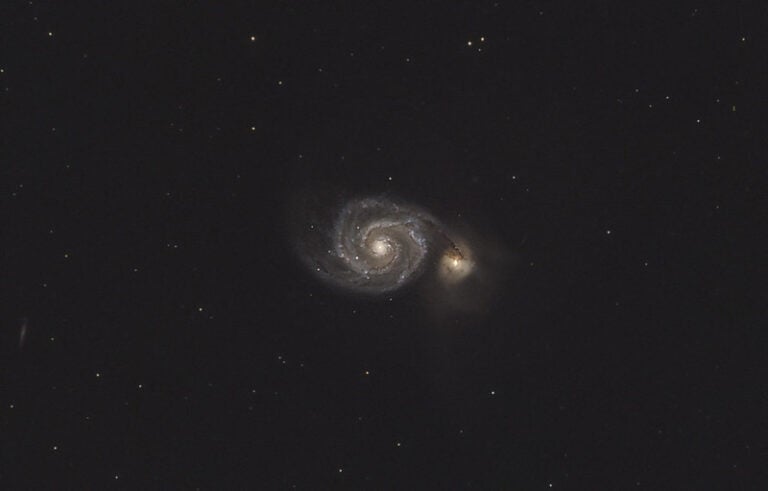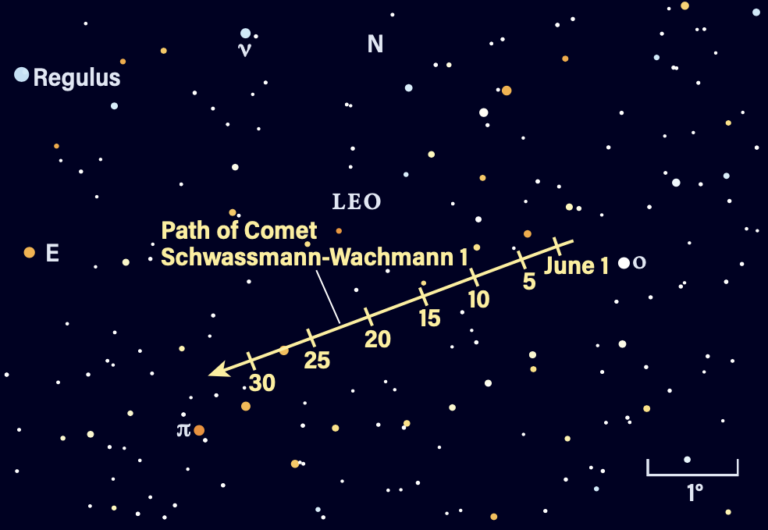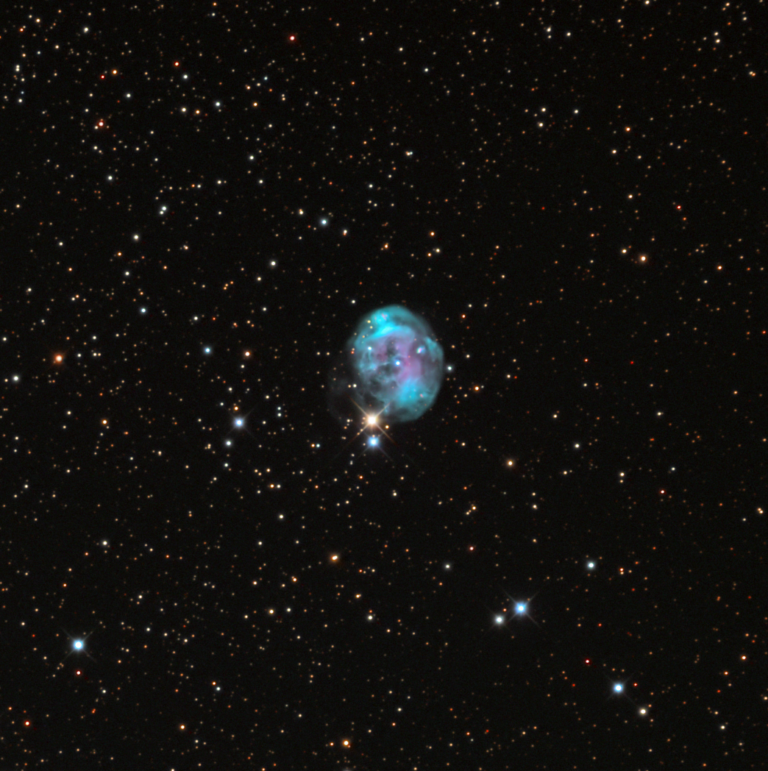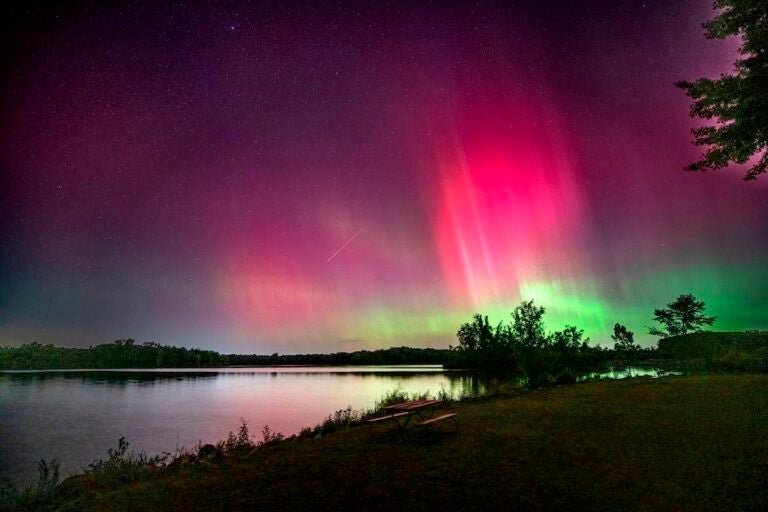The Trifid Nebula (M20) is the trifecta of deep-sky objects: It combines a blue reflection nebula with an emission nebula glowing in red Hydrogen-alpha (Hα) light, all divvied up by opaque lanes of dark nebulosity threaded throughout.
For all its spectacle in photos, however, the Trifid Nebula is visually faint. That explains why, when Charles Messier discovered it June 5, 1764, he portrayed this 20th entry in his catalog as only a “cluster of stars.” William Herschel was the first to describe the object as “three nebulae, faintly joined, form a triangle. In the middle is a double star.” It was this appearance that led Herschel’s son John to later christen the object Trifid, from the Latin trifidus, meaning split into three.
A quick glance at M20 through a scope will usually show only a 7th-magnitude star surrounded by a faint glow. With careful observation, that glow will appear cleaved by dark nebulae. The dark lanes all seem to diverge away from the central star, HD 164492.
The energy irradiating the Trifid, which is roughly 5,000 light-years from Earth and spans some 15 light-years, comes from a young star cluster buried within it. HD 164492 is the brightest member of this cluster. High magnification reveals HD 164492 is a multiple star system, too. How many stars can you resolve? There is a magnitude 8.7 star 11″ to the primary star’s south and a 10th-magnitude component 6″ to its north. The former is also joined by two close-set stars, and one more hidden in the system makes this a sextuple star system.
Since the Trifid never gets very high in the sky from mid-northern latitudes, for the best view, you will need a clear southern horizon free from interfering light pollution. Averted vision will certainly help, as will using a narrowband filter. With a double-digit aperture, the full shape of the Trifid blossoms into view. More than two dozen stars appear sprinkled across the partitioned emission nebula. Faint tufts of the reflection nebula extend farther to the north, toward and beyond 7th-magnitude HD 164514.
Make sure to explore Astronomy’s full list of 101 cosmic objects you must see. New entries will be added each week throughout 2022.
To get the latest astronomical news and observing content delivered directly to your door, subscribe to Astronomy magazine today!

